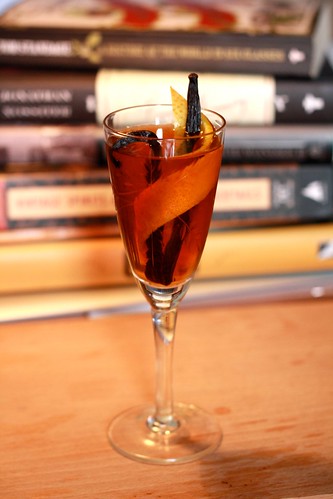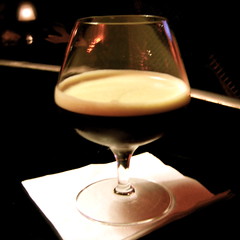Saint-Antoine
So, I was chilling out at work, doing my thing when I got a phone call from Grant Cunningham at Blavod/Luscious Liquid who said there was someone he'd like me to meet. That person turned out to be Paul Bungener who is the UK brand ambassador for FAIR., the producers of the world's first range of Fair Trade spirits and liqueurs. The range consists of the world's first quinoa based vodka along with a Goji berry liqueur and a coffee liqueur, and while they're available in retail (at Harvey Nichols) they haven't entered the on-trade in Edinburgh yet. Since 2010, FAIR. have been sourcing sustainably farmed ingredients - Bolivian quinoa for the vodka, Tibetan Goji berries and Mexican coffee beans for the liqueurs - and shipping them over to Cognac for distillation. The vodka is distilled once through a two-column continuous still, so it has a more distinct flavour than one that's been through a triple- or quadruple-distillation; there's a pleasant peppery note that comes from the quinoa. The Goji berry liqueur has a phenomenal bright red colour; it has an odd, generic red berry flavour - recalling strawberries and raspberries but not directly emulating them. It seems like an ingredient that would work quite well as a bridge between flavours that don't necessarily overlap.
The coffee liqueur really stood out for me. It's a complete change of pace from better known brands like Kahlua or Illyquore - in comparison, they immediately seemed heavier and more cloying. That's not to say that FAIR Café isn't sweet but it comes across as a much more delicate creature, with notes of fresh espresso mingling with some chocolate and Tiramisu.
Fair Trade is one of those ideas that it's hard not to get behind so it's refreshing to see those principles being applied to distilled beverages. It's also refreshing to see that those principles aren't the only compelling reason to pick one of the products - they're at least as good as anything you'll see on an upmarket backbar; in the case of the Café maybe better.
I was lucky enough that Paul left a sample of the FAIR Café to play with before he moved onto his next appointment. Seeing as this is going up on Bastille Day, combined with the fact that FAIR. is based there, Cognac was definitely in my thoughts.

Sainte-Antoine
35ml Merlet Brothers Blend Cognac
15ml FAIR Café
5ml Fernet Branca
10ml Demerara syrup (Fair Trade, of course.)
Stir all ingredients with ice and strain into a chilled cocktail glass. Garnish with a vanilla bean wrapped in an orange zest twist.
(The Bastille - as famously stormed on 14th July 1789 - stood on the Rue Sainte-Antoine.)

